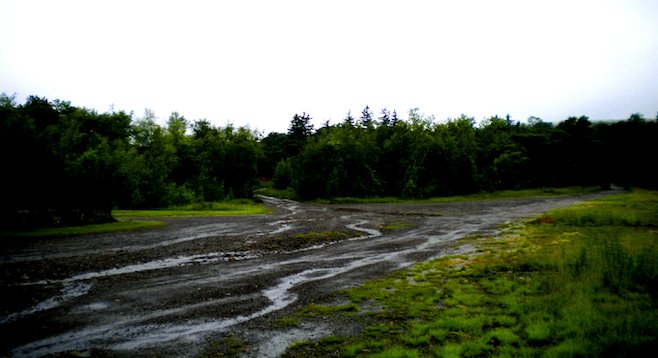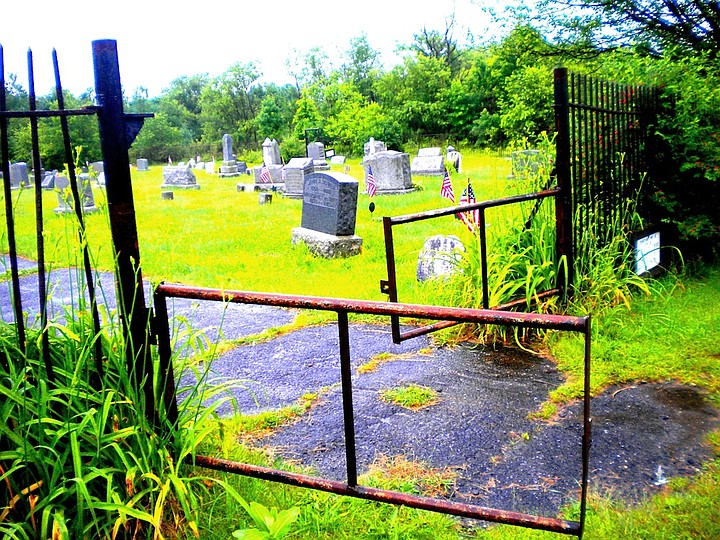 Facebook
Facebook
 X
X
 Instagram
Instagram
 TikTok
TikTok
 Youtube
Youtube

In May 1962, an ill-advised trash fire set light to the veins of coal running beneath the small mining town of Centralia, PA, and sparked a dangerous inferno that has raged ever since.
Despite various intervention – installing pipes to vent poisonous gases, using ash to pack down sinkholes and starve the fire of oxygen, demolishing homes and relocating residents – Centralia still smoulders today. The town’s zip code was revoked in 2002, yet despite the serious threat to themselves and their property, a few hardy residents remain.

While visiting a good friend in Maryland, we decided to see if Centralia was as Dantean as it sounded. After reading David DeKok’s comprehensive Unseen Danger on the plane ride over, I had high expectations. It paints a sad story of bureaucracy, procrastination and political apathy.
The town was also inspiration for the horror movie Silent Hill, and as we turned onto the rough and rugged Main Street, I was imagining an ethereal otherworld of distorted mists and sudden sinkholes collapsing into fiery pits, of monstrous figures in ancient mining gear.
Yet the truth is far bleaker than any horror story. After fifty years alight, there is very little left of Centralia, and other than a handful of determined residents, no one seems to care.
It became quickly evident that the people of Centralia do not want to be found. The rerouted 61 runs through town, but the side streets are overgrown dirt tracks and all identifying signs have been removed. Houses have been torn down to leave empty plots, and "no trespassing" notices are everywhere. The only public facilities that remain are a municipal building and two churches.
An angry, handwritten placard vents local rage at Gov. Corbett; the residents feel abandoned by the authorities and believe it is a conspiracy to gain access to the millions of dollars’ worth of anthracite lying underground. The atmosphere in town is tense, hostile and despairing.

We turned up on a grey, wet day that certainly added to the despondency. After parking our jeep at Odd Fellows Cemetery to see where the fire started, we pushed through the undergrowth to find two of the vent pipes installed in the '80s to prevent lethal carbon monoxide from rising into homes and poisoning the residents.
The initiative didn’t work, and there were several fatalities as a direct result of the fire. Despite seeing no one else in town, we had the creeping sensation of being watched. Few cars ambled down Route 61. No birds sang in Centralia.
We didn’t feel comfortable to leave our jeep and explore much further, so we backtracked in search of the old route 61, now a buckled tarmac road that trails off into overhanging trees and more "no trespassing" signs.
The division between public and private land is unclear, but the repeated warnings made a fair point; gawkers are not welcome. On our way out of town, a car tailed us closely for almost two miles before turning off. Perhaps we were just unsettled, but it felt like we were being hustled out of Dodge.
Today, Centralia is more like limbo than hell. There was no stench of sulphur in the air, the ground wasn’t hot to touch and the rain damped down any signs of what was raging beneath our feet. The sinkholes we did find were recently patched up, not smoking and deadly. Yet the feeling of injustice still lingers, and we felt bad for intruding on the quiet tragedy of others.
It is predicted that without intervention, Centralia will burn for another few centuries, at least, and the fire has already spread to the adjacent town of Byrnesville. Still no effective intervention has been implemented or suggested other than complete abandonment.
I have visited several sites of disaster and human catastrophe – Chernobyl, Hiroshima, New Orleans, the ghost towns of the Southwest – but nowhere have I felt such rage or betrayal. This town does not want sympathy or notoriety; it just wants to be left alone.


In May 1962, an ill-advised trash fire set light to the veins of coal running beneath the small mining town of Centralia, PA, and sparked a dangerous inferno that has raged ever since.
Despite various intervention – installing pipes to vent poisonous gases, using ash to pack down sinkholes and starve the fire of oxygen, demolishing homes and relocating residents – Centralia still smoulders today. The town’s zip code was revoked in 2002, yet despite the serious threat to themselves and their property, a few hardy residents remain.

While visiting a good friend in Maryland, we decided to see if Centralia was as Dantean as it sounded. After reading David DeKok’s comprehensive Unseen Danger on the plane ride over, I had high expectations. It paints a sad story of bureaucracy, procrastination and political apathy.
The town was also inspiration for the horror movie Silent Hill, and as we turned onto the rough and rugged Main Street, I was imagining an ethereal otherworld of distorted mists and sudden sinkholes collapsing into fiery pits, of monstrous figures in ancient mining gear.
Yet the truth is far bleaker than any horror story. After fifty years alight, there is very little left of Centralia, and other than a handful of determined residents, no one seems to care.
It became quickly evident that the people of Centralia do not want to be found. The rerouted 61 runs through town, but the side streets are overgrown dirt tracks and all identifying signs have been removed. Houses have been torn down to leave empty plots, and "no trespassing" notices are everywhere. The only public facilities that remain are a municipal building and two churches.
An angry, handwritten placard vents local rage at Gov. Corbett; the residents feel abandoned by the authorities and believe it is a conspiracy to gain access to the millions of dollars’ worth of anthracite lying underground. The atmosphere in town is tense, hostile and despairing.

We turned up on a grey, wet day that certainly added to the despondency. After parking our jeep at Odd Fellows Cemetery to see where the fire started, we pushed through the undergrowth to find two of the vent pipes installed in the '80s to prevent lethal carbon monoxide from rising into homes and poisoning the residents.
The initiative didn’t work, and there were several fatalities as a direct result of the fire. Despite seeing no one else in town, we had the creeping sensation of being watched. Few cars ambled down Route 61. No birds sang in Centralia.
We didn’t feel comfortable to leave our jeep and explore much further, so we backtracked in search of the old route 61, now a buckled tarmac road that trails off into overhanging trees and more "no trespassing" signs.
The division between public and private land is unclear, but the repeated warnings made a fair point; gawkers are not welcome. On our way out of town, a car tailed us closely for almost two miles before turning off. Perhaps we were just unsettled, but it felt like we were being hustled out of Dodge.
Today, Centralia is more like limbo than hell. There was no stench of sulphur in the air, the ground wasn’t hot to touch and the rain damped down any signs of what was raging beneath our feet. The sinkholes we did find were recently patched up, not smoking and deadly. Yet the feeling of injustice still lingers, and we felt bad for intruding on the quiet tragedy of others.
It is predicted that without intervention, Centralia will burn for another few centuries, at least, and the fire has already spread to the adjacent town of Byrnesville. Still no effective intervention has been implemented or suggested other than complete abandonment.
I have visited several sites of disaster and human catastrophe – Chernobyl, Hiroshima, New Orleans, the ghost towns of the Southwest – but nowhere have I felt such rage or betrayal. This town does not want sympathy or notoriety; it just wants to be left alone.
Comments